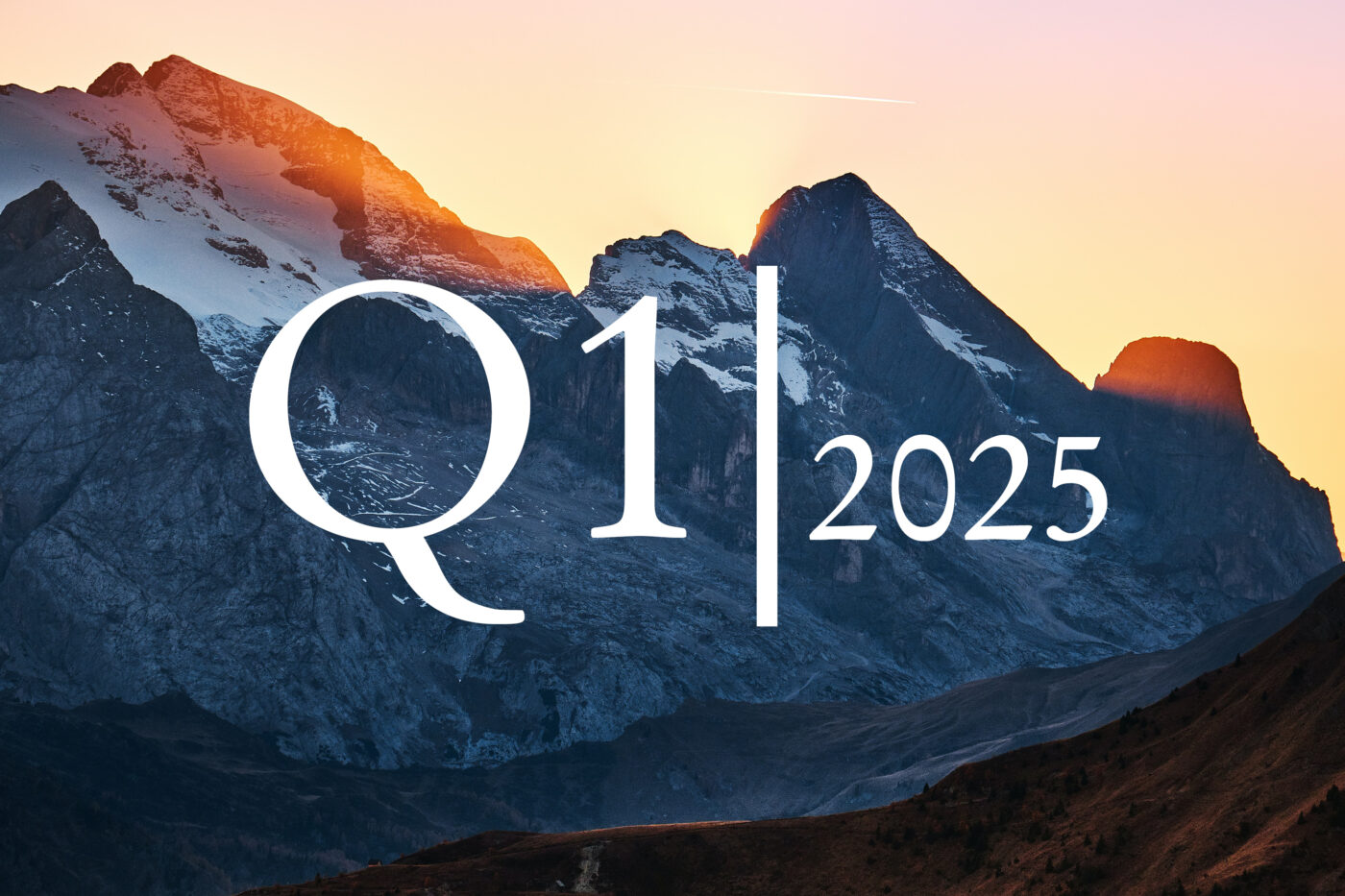In a nutshell
Earnings expectations have continued to come down since the beginning of the year, as we expected. In the meantime, hardly any growth is expected globally for 2023, which we consider realistic.
Valuations have consequently risen across the board, also due to the equity rally. US stocks remain the most expensive.
We do not expect much upside or downside potential in Q2; however, the risks are clearly to the downside. Commodity-heavy regions/segments remain attractive.
European equities clearly ahead in the first quarter
The stock markets got off to a great start in the new calendar year, with European equities leading the way. One reason for this was that the absence of a winter recession caught many pessimistic investors on the wrong foot. US equities, on the other hand, generally lagged behind. Robust economic and inflation figures put pressure on US equities, which tend to be highly valued, due to ongoing restrictive central bank policy. Investors in Asian equities were also cautious after the strong performance at the turn of the year. They want to wait and see how strong and positive the effects of China’s opening after the years-long COVID-19 lockdowns actually are. In addition, there are new fears of action by the US against China.
Nearly all equity segments up year-to-date, but with considerable dispersion - European equities and cyclicals clearly in front
Earnings expectations now somewhat more realistic
Analysts have revised Q1 earnings estimates down further, as we expected. Rising wages, higher refinancing costs and increased uncertainty about the economic outlook are weighing on profit margins. On the other hand, the recent positive economic surprises, especially in the US, should be supportive. A severe recession has thus become less likely, at least in the short term. Currently, the market is assuming 2023 earnings growth of just under 1% for the industrialised nations and a year-on-year earnings recession for the emerging markets. Accordingly, we think there should only be moderate profit reductions from here. The Q1 reporting season, which is about to start, should bring more clarity.
Economic downturn no longer priced in
Despite increasing quantitative tightening by central banks and bond markets pricing in more interest rate hikes this year, there has been a recent valuation expansion. The forward P/E ratio for the S&P 500 has risen from 16 to 18 since October last year, with 10-year Treasury yields being volatile, but roughly unchanged. This means that US equities are now again priced above average compared with their own history. European equities are now also more expensive than in October after the significant rally, but they are still cheap compared with their own history. At least they are not pricing in economic optimism, but also not a recession. In terms of valuation, there is hardly any room for improvement this year – especially since some valuation-insensitive strategies such as CTAs are now more heavily invested in (European) equities again.
Sideways phase likely into the summer
But fundamentally, too, markets are already in thin air. The reopening of China should be just as supportive as the robust economic data in the US and the Eurozone to date. However, the effects of restrictive central bank policies tend to take effect with a time lag of up to 18 months, so they will probably not become markedly more visible until H2 2023. The first signs are already appearing in the form of weakening real estate markets and the crisis of individual regional banks in the US. At the same time, bonds have continued to become more attractive compared with equities as interest rates rose, which should encourage pension funds and insurance companies in particular to reduce their positions in equities and increase their positions in bonds. Therefore, the upside potential of equities is likely to be clearly limited for the time being. The typical seasonality also supports this. A good start to the year is often followed by a tough summer. On the other hand, most investors are aware of these points, so they are already cautiously positioned. This should also limit the downside potential of the equity markets. In addition to the US debt ceiling, a significantly more restrictive monetary policy on the part of the Bank of Japan, which will have a new governor from April, could cause more volatility for markets. If, contrary to expectations, Japanese interest rates were to rise sharply, many Japanese investors would withdraw their money abroad and invest in the domestic market. As a result, interest rates worldwide would probably continue to rise. Consequently, we have underweighted expensive equity regions such as the US and see potential in more cheaply valued regions such as Latin America, the UK and the Eurozone – especially as the first two should also benefit from a commodity recovery.
Rising equity (valuations) despite unchanged high interest rates
Net return indices for MSCI Europe (EUR) and MSCI USA (USD) normalised, 03/01/2022 = 100, as well as yields on 10-year US government bonds
Forecast overview: limited upside potential left until year-end
Berenberg and consensus forecast in comparison, values at year-end 2023 and mid-year 2024
What is on companies' minds?
China is back
At the beginning of the year, company executives were largely optimistic, surprising a largely pessimistic investor base. This can be attributed to continued strong demand from consumers, but we also received reports from manufacturers that their order books were developing favourably. The high inflation figures of the past year have thus hardly weighed on demand so far. Board members also reported a positive development of input costs. Energy prices in particular have returned to normal surprisingly quickly in Europe, which has relieved many companies. The major tightening of supply chains has also largely dissipated. There was particular euphoria with regard to business in China. With many pandemic restrictions lifted, many companies were able to report a noticeable jump in demand from China. Consumer goods companies in particular are benefiting from this, led by manufacturers of luxury goods. It is likely to take a little longer for industrial companies, but here too they are much more confident than before Christmas. More cautious companies confirmed a positive development in recent months, but at the same time pointed to low visibility.
- Matthias Born, CIO Equities
Author

Ulrich Urbahn
Ulrich Urbahn has been working for Berenberg since October 2017 and is responsible for quantitative analyses and the devel-opment of strategic and tactical allocation ideas, and is involved in capital market communications. He is a member of the Asset Allocation Committee and portfolio manager of the Berenberg Variato. After graduating in economics and mathematics from the University of Heidelberg, he worked for more than 10 years at Commerzbank, among others, as a senior cross asset strate-gist. Mr Urbahn is a CFA charterholder and was part of the three best multi-asset research teams worldwide in the renowned Extel survey for many years.



